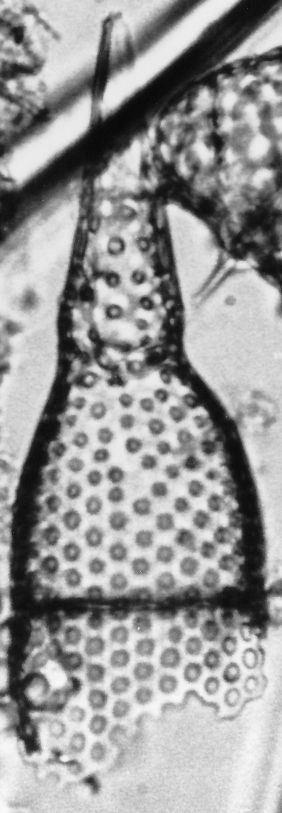|

|
|
Anthocyrtidium stenum
Sanfilippo and Riedel, 1992
|
Description - Add description
Description: Three-segmented skeleton with an elongated, inconspicuously lobed cephalis, the wall of the unpaired lobe merging with the weakly bladed horn and forming an opening at the top of the cephalis. Its lateral lobes cause a change in contour near the collar stricture and another where they join the unpaired lobe. There is no change in contour where the unpaired lobe merges with the apical horn. The thorax is much less voluminous than in other members of the genus. It is narrowly conical, with a thin wall and small pores tending to longitudinal arrangement, some specimens having the pore-pattern interrupted by poreless areas. Abdomen rarely preserved, more delicate than the thorax, subcylindrical, sometimes fluted, narrowing slightly distally, and without a differentiated termination. Abdominal pores small, irregular in size and arrangement.
Etymology: The name is from the neuter form of the Greek adjective stenon, narrow, a reference to the narrow shape of this species.
Distribution: A. stenum ranges from the Calocyclas bandyca Zone (Late Eocene) into the Theocyrtis tuberosa Zone (Early Oligocene) and is found rarely and sporadically in most of the well preserved low latitude samples of appropriate age used in this study. A. stenum constitutes 0.1- 1% of the total assemblage.
Distinguishing characters: This species differs from other members of Anthocyrtidium by the narrow, thin-walled thorax,and the paired lobes being broad near the base relative to the narrow thorax. Some specimens have poreless areas on the
thorax.
| | Sanfilippo and Riedel 1992 |
|
|
 |

|